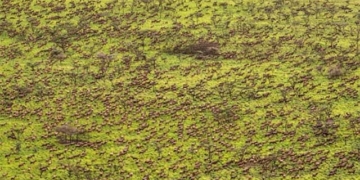A recent report from the National Aeronautics and Space Administration (NASA) reveals that the Spirit and Opportunity rovers, currently operational on Mars, have gathered significant new information about the planet’s history, including periods of extreme heat and humidity suitable for life.
 |
|
One of the images captured by the Spirit rover on May 19, 2005. The photo depicts a glow on the rim of Gusev Crater on Mars. |
With the information collected, NASA scientists have mapped the topography of Mars’ surface, which consists of sand and pebbles overlying bedrock. From the analysis of six types of Martian rocks, scientists believe that volcanoes were once highly active, and that hot springs along with significant amounts of water existed on Mars. Sedimentary layers indicate that a transition from dry to wetter conditions occurred 3-4 billion years ago, and this transformation happened cyclically.
The Spirit rover has successfully explored the enigmatic surface of Mars for one year (equivalent to 687 Earth days) and has now entered its second year, having been operational for three weeks; meanwhile, the Opportunity rover will also begin its second Martian year on December 11.
Although the operational lifespan originally designed for these rovers has long since expired, they continue to function well through all seasons on Mars and are currently facing the challenge of surviving the upcoming winter on the Red Planet.


















































